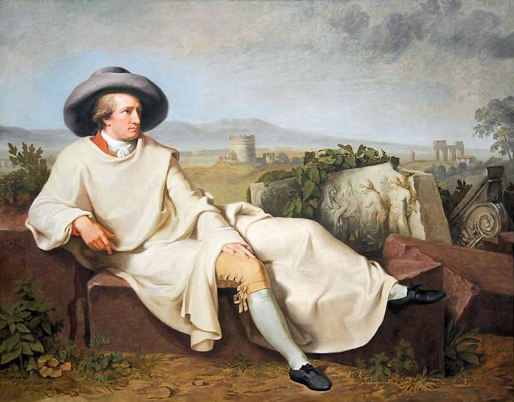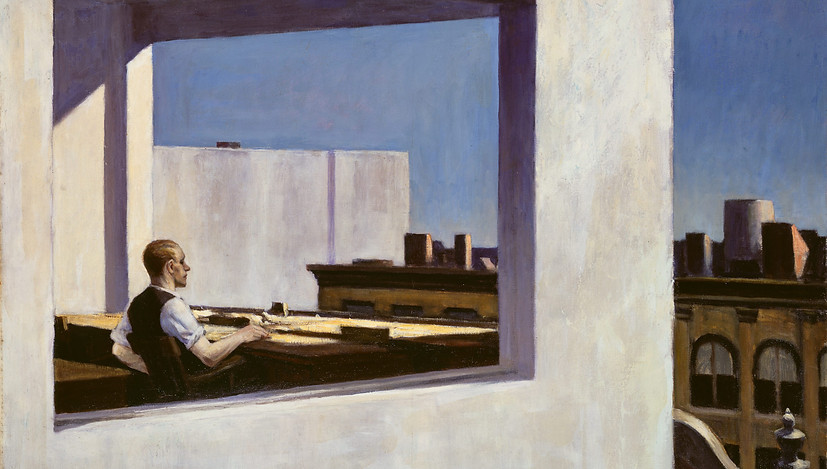Viaggio al centro del... salotto | Journey to the center of the... living room
- ellemmelle

- 26 mar 2020
- Tempo di lettura: 5 min
English version below
Viaggio al centro del... salotto
Testo di Laura Tinti, con una traduzione di Maddalena Brentari
Durante questo periodo di quarantena non ci è permesso uscire di casa, ma ciò non significa che non ci sia permesso viaggiare con la fantasia…
In tema di letteratura, non posso non parlarvi di un evento storico molto importante che ha caratterizzato il XVII e il XVIII secolo. Si tratta proprio di un viaggio, un viaggio che gli intellettuali e i rampolli dell’aristocrazia dovevano intraprendere come parte essenziale della loro istruzione. Questo viaggio, il cosiddetto “Grand Tour”, comprendeva tutta l’Europa, ma aveva come meta fondamentale l’Italia, e aveva come obiettivo l’arricchimento culturale.
Un viaggio in Italia particolarmente significativo, e che va anche oltre il Grand Tour, sia per quanto riguarda il programma sia per quanto riguarda le motivazioni che ne stanno alla base, è quello del letterato tedesco Johann Wolfgang Goethe, che lo intraprese motivato da un forte interesse verso l’Italia, la letteratura italiana e l’antichità classica.

Itinerario di Goethe da settembre 1786 a maggio 1788
É il 3 settembre 1786 quando Goethe, con un passaporto falso che reca il nome di Philipp Möller e che gli avrebbe permesso di viaggiare in tranquillità, sale sulla carrozza abbandonando Karlsbad e il suo viaggio verso l’Italia inizia. Passando per Monaco e il Brennero, l’11 settembre arriva a Trento, poi a Torbole e Malcesine. Si innamora del Lago di Garda, tanto da parlarne nel Mignon dedicandogli alcuni versi…
“Conosci il paese dove fioriscono i limoni?
Nel verde fogliame splendono arance d'oro
Un vento lieve spira dal cielo azzurro
Tranquillo è il mirto, sereno l'alloro
Lo conosci tu?
Laggiù, laggiù
Vorrei con te, o mio amato, andare!”
Tradotto da Kennst du das Land, wo die Zitronen blühn, J. W. Goethe (1795)
Passa per Verona, dove ammira l’architettura, in particolare l’Arena, e Vicenza, dove visita le opere di Palladio ed elogia il grande artista. Anche a Padova egli è entusiasta di ciò che vede, visita e scopre. Qui visita l’orto botanico più antico d’Europa e inizia a teorizzare l’Urpflanze, una pianta originaria da cui sarebbero derivate tutte le altre. Mentre si reca da Padova verso Venezia percorre il Brenta in gondola per la prima volta, e qui è felice di assistere a vari spettacoli della Commedia dell’Arte ed è felice di vedere per la prima volta il mare. Il viaggio continua verso Sud: Ferrara, Cento, Bologna, Firenze, Perugia e finalmente… Roma, da lui tanto agognata. Qui entra in contatto con il pittore Wilhelm Tischbein, da cui otterrà il suo celebre ritratto.

Goethe nella campagna romana, Johann Heinrich Wilhelm Tischbein (1786)
È con quest’ultimo che si reca a Napoli il 25 febbraio 1787. La città lo incanta, tanto che la sua frase “Siehe Neapel und stirb” (“Vedi Napoli e muori”), diventerà un famoso detto. Durante il soggiorno non mancano le visite a Pompei e alle tante meraviglie dell’antichità presenti nei dintorni. L’ultima tappa del suo viaggio è la Sicilia, che di certo non smette di meravigliarlo (“L’Italia senza la Sicilia non lascia immagine alcuna nello spirito. Qui è la chiave di ogni cosa”).

Goethe alla finestra del suo appartamento a Roma, Johann Heinrich Wilhelm Tischbein (1787)
Goethe racconta il suo viaggio e scrive i suoi pensieri in un diario, come era solito fare per gli scrittori del Grand Tour. Questo diario diventerà un’opera monumentale dal titolo Viaggio in Italia, in cui raramente troviamo la descrizione del Paese, ma piuttosto la descrizione delle impressioni dello scrittore, le riflessioni sull’arte, la cultura e la letteratura, che ci permettono di conoscere meglio l’autore piuttosto che il soggetto di cui egli parla.
English Version
Journey to the center of the... living room
Translated by Maddalena Brentari, from the original text by Laura Tinti
During this time of quarantine, we are not allowed to leave the house, but this doesn’t mean that we cannot travel with our imagination.
When talking about literature, I cannot refrain from sharing with you an important historical event that characterized the XVII and XVIII centuries. We are actually talking about a journey, travel that intellectuals and the scions of the aristocracy had to undergo as an essential part of their education. The goal of this journey, the so-called “Grand Tour”, was a cultural enrichment and even if it concerned all Europe, it had Italy as its fundamental destination.
A particularly significant journey to Italy, that goes beyond the actual program and the motivations behind the Grand Tour, is the one that the German novelist Johann Wolfgang Goethe undertook because of his deep interest in Italy, Italian literature and classical antiquity.

Goethe's itinerary from September 1786 to May 1788
It was September 3rd, 1786 when Goethe got into a train carriage with a fake passport bearing the name of Philipp Möller which would have allowed him to travel in peace; by leaving Karlsbad, his journey to Italy begun. After he passed Monaco and the Brenner Pass, he arrived in Trento on September 11th, then he visited Torbole and Malcesine. He fell in love so deeply with Lake Garda that he dedicated the following verses to it in his opera, Mignon:
Know'st thou the land where the fair citron blows, Where the bright orange midst the foliage glows, Where soft winds greet us from the azure skies, Where silent myrtles, stately laurels rise, Know'st thou it well? 'Tis there, 'tis there, That I with thee, beloved one, would repair.
Translated by Kennst du das Land, wo die Zitronen blühn, J. W. Goethe (1795)
Goethe visited Verona, where he admired its architecture, especially the Arena, and Vicenza, where he saw the works of Palladio, that he praised as a great artist. While visiting Padua, he was equally enthusiastic about what he saw, visited and discovered: here, he explored the oldest botanical garden in Europe and he started speculating about the Urpflanze, a plant from which all other plants should have been born.
While he was going from Padua to Venice, he sailed up the river Brenta on a gondola for the first time, and he was happy to see the sea for the first time, alongside with various plays by the Commedia dell’Arte.
His journey continues towards the south of Italy: Ferrara, Cento, Bologna, Florence, Perugia and, finally, Rome, which he had longed to see for a very long time. Here, he got in touch with the painter Wilhelm Tischbein, which will paint him his famous portrait.

Goethe in the roman countryside, Johann Heinrich Wilhelm Tischbein (1786)
It is with the latter that Gothe went to Naples on February 25th, 1787. He was so enchanted by this city that he coined the phrase "Siehe Neapel und stirb" ("See Naples and die"), which would become a famous saying. During his stay he didn’t forget to visit Pompeii and many other wonders of antiquity in the surrounding area.
Sicily is the last stage of his journey, which certainly did not cease to amaze him (he wrote "Italy without Sicily leaves no image in the spirit. Here is the key to everything").

Goethe at the window of his apartment in Rome, Johann Heinrich Wilhelm Tischbein (1787)
Goethe narrated his journey and wrote all his thoughts in a diary, as it was a common habit for writers on their grand tour. This diary will become a monumental work entitled Journey to Italy, in which we rarely find actual descriptions of the country, substituted by the description of his impressions, his reflections on art, culture, and literature, which allow us to get to know the author better rather than the subject he talks about.






Comentários